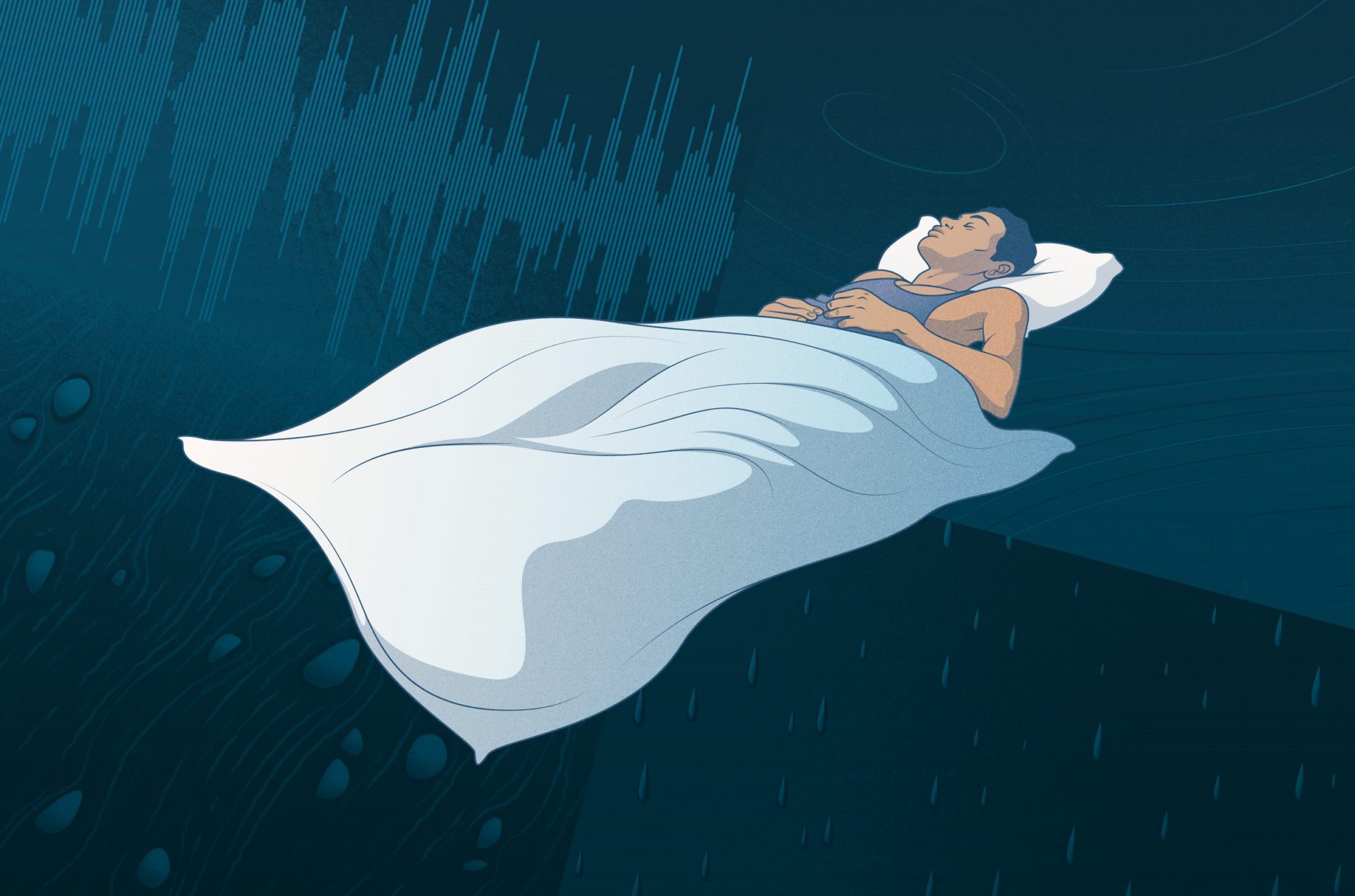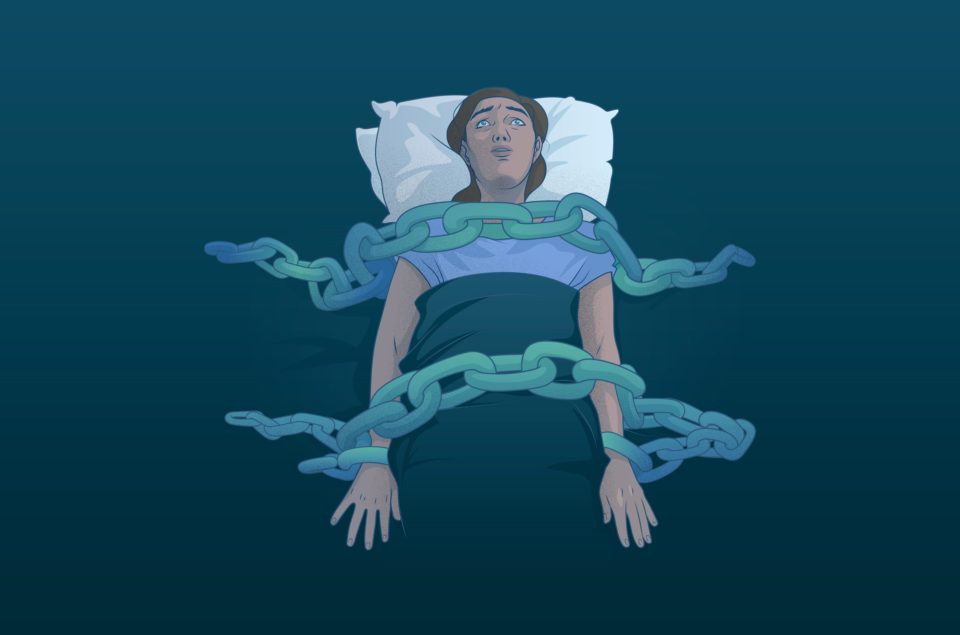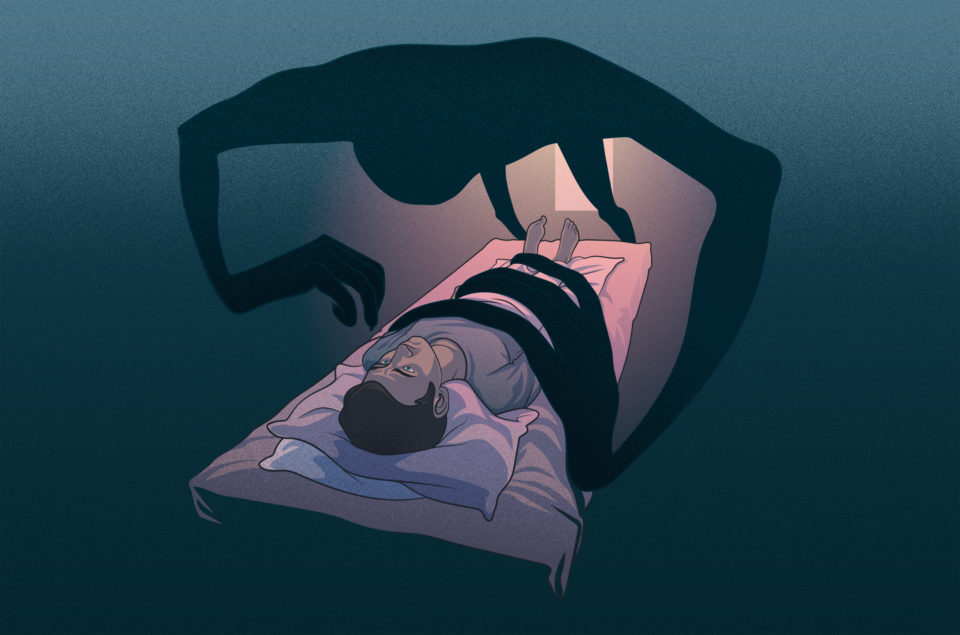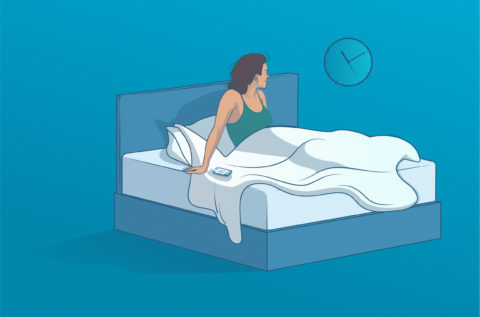Imagine waking up in the middle of the night without being able to move or speak. This isn’t as rare as you may think – an estimated 8% of people experience this sensation at some point in their life, and 5% have regular episodes. Indeed, sleep paralysis is the inability to move even if you feel wide awake, usually right before falling asleep or just after waking up. Affecting men and women equally, it can occur at any age, but the first episodes usually occur in childhood or adolescence, young adulthood.
In this article, we’ll cover:
- What triggers sleep paralysis
- How you can avoid it
- Living with sleep paralysis – is it an issue of concern?
What Triggers Sleep Paralysis?
The exact causes of sleep paralysis are not fully understood yet. Researchers believe that multiple factors are involved in triggering sleep paralysis episodes. It does seem that it typically occurs in people who have poor sleep quality. It also seems that episodes can occur together with other sleep experiences, such as nightmares.
People with sleeping disorders, such as narcolepsy and obstructive sleep apnea (OSA), report higher rates of sleep paralysis. In addition, studies indicate that it’s particularly prevalent in people with post-traumatic stress disorder (PTSD) or who have experienced physical and emotional distress. A further indicator that certain mental health conditions have a connection with this sleep state.
Other factors that may increase the risk of sleep paralysis include jet lag, shift work, among other things that can disrupt a regular sleep schedule.
Symptoms
This under-researched condition involves a mixed state of consciousness – combining both wakefulness and the rapid eye movement (REM) stage of the sleep cycle. This means that the mental imagery of REM sleep and atonia (an inability to move that keeps us from acting out our dreams) carries on even while we feel awake. Therefore, during a sleep paralysis episode, we are unable to move our body or speak.
In addition to paralysis, other common symptoms are anxiety and hallucinations. Being aware of this loss of muscle control can be frightening, especially when combined with hallucinations. In fact, 75% of sleep paralysis episodes include hallucinations. They can involve a perception of an intruder or dangerous presence in the room – often combined with a sense of suffocation, fear and panic – or a feeling of flying or out-of-body sensation.
Types of Sleep Paralysis and length of episodes
Sleep paralysis can be categorized as:
- Isolated (where episodes are not connected to narcolepsy). If daytime sleepiness occurs after some episodes, the state may be a sign of narcolepsy.
- Recurrent (multiple episodes – over time), which can be combined to reflect a condition of Recurrent Isolated Sleep Paralysis (RISP).
Episodes typically occur while falling asleep (hypnagogic) or waking up (hypnopompic), and last from a few seconds to as long as 20 minutes – but usually around six to seven minutes. You may experience only one episode in your lifetime, or episodes may come and go, depending on whether or not the triggers mentioned above appear.
How to avoid sleep paralysis
If you are experiencing recurring episodes, it’s advisable to speak to your doctor about your episodes. For many it’s a relief simply to hear that sleep paralysis is relatively common and that they’re not alone with this affliction. Your doctor can also check for any underlying sleep problems, such as narcolepsy or sleep apnea.
Often the most effective way to help with sleep paralysis is by maintaining good sleep quality. Self-care goes a long way; improving daily sleep habits usually does the trick.
- Avoid sleeping on your back. Research shows that sleeping on the back can be linked to an increased risk of sleep paralysis. Bulk up some pillow behind your back if you’re prone to tipping over to your back while sleeping on your side.
- Keep bedtime consistent. Go to bed at the same time each night. While you’re at it, try and keep to a morning wake-up schedule as well. A schedule that is consistent on weekends and weekdays will serve you the best. This way your body gets used to it and your natural built-in body clock will do most of the work for you.
- Avoid napping. This can help you keep to a consistent sleep schedule.
- Create a comfortable sleep environment and eliminate distractions in the bedroom. Don’t watch TV in the bedroom and don’t browse the web in bed. Keep soft lighting and try to block out loud noises.
- Decrease or fully stop your caffeine and alcohol intake close to bedtime. Experiment to see how sensitive you are to caffeine and make adjustments accordingly.
- Keep a bedtime routine that helps you unwind and feel relaxed. You can include meditation and muscle relaxation exercises.
Living with sleep paralysis – is it an issue of big concern?
Although for some an episode can feel terrifying and unsettling, sleep paralysis is not a serious sleep problem or a dangerous condition that can put your health at risk. However, research suggests that those who experience recurrent episodes may develop negative thoughts about sleeping, associating the distress they feel during an episode with bedtime. Consequently, this can reduce their sleep quality and cause insomnia or sleep deprivation, leading to daytime sleepiness – something that can have ramifications for overall health.
Although further research is needed to better understand the causes of this condition, one thing is clear — healthy sleep patterns are at the heart of coping with sleep paralysis and reducing its impact. Start tracking your sleep patterns with Sleep Cycle and get a good overview of what your sleep looks like.







